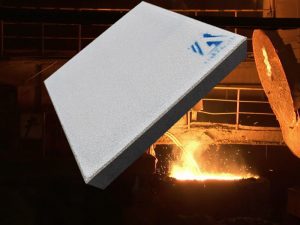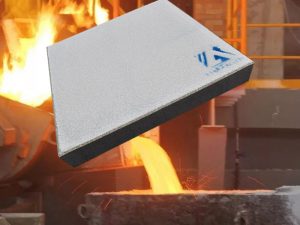Reasons for broken ribs and collapse of ceramic filter plates.
In the process of making the ceramic foam filter, the aluminum dihydrogen phosphate solution is used as a binder to stick the alpha alumina powder on the polyurethane sponge.
The effect of different aluminum dihydrogen phosphate content on the microstructure of alumina ceramic foam filters is shown in Figure 1. According to Figure 1, the foamed ceramic filter plate has the shape of a polyurethane sponge, resulting in a sponge-like porous structure with a pore diameter between 300 and 800 μm. In the process of only making ceramic filter plates, if the content of aluminum dihydrogen phosphate is 10%, as shown in Figure 1(a), due to insufficient adhesion, it is not conducive to the slurry forming of foam ceramics. In the microstructure of foam ceramic filter plates certain defects will occur, resulting in broken ribs and collapse of the hole wall. Explain when using aluminum dihydrogen phosphate as a binder. With the increase of aluminum dihydrogen phosphate content, the cell wall of the ceramic foam will be stronger, and the damage rate of the cell wall of the ceramic filter plate will be significantly reduced. When the maximum content is 30%, as shown in Fig. 1(c), the cell walls of the foamed ceramics are relatively perfect, without obvious defects, and the cell walls are relatively coarse and dense. Combined with Adtech's research, it can be seen that the sintering temperature of traditional alumina foam ceramics is higher than 1 300 ℃, and this paper successfully prepared alumina foam ceramics at 800 ℃ using aluminum dihydrogen phosphate as a binder.
The pore walls are porous structures. As the content of aluminum dihydrogen phosphate increases, the pores on the rib gradually decrease and decrease. When the maximum content is 30%, as shown in Figure 2(c), no obvious pores appear on the surface of the rib, and the aluminum dihydrogen phosphate is pyrolyzed. The product binds the alumina particles together well, and the alumina particles retain their original morphology. The micro-morphology of alumina foam ceramic pore bars under different aluminum dihydrogen phosphate content is shown in Figure 2. It can be seen that when the content of aluminum dihydrogen phosphate reaches 10%, there are many pores in the pore wall of the foamed ceramic, and there are obvious gaps between the alumina particles, as shown in Figure 2(a), indicating that the content of less aluminum dihydrogen phosphate is too high. Low temperature is not conducive to the bonding between alumina particles. There is no liquid phase sintering and densification process in the low-temperature sintering technology, which not only saves energy but also realizes the preparation of alumina foam ceramics at a lower shrinkage rate. The linear shrinkage and bulk density were measured.

(a)10% (b)20% (c)30%
Fig.1 Effect of Al(H2PO4)3 content on microstructure of the alumina foam ceramics

(a)10% (b)20% (c)30%




